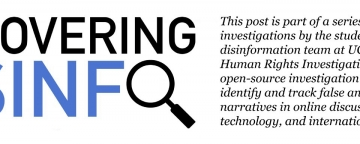This is part 1 of a 3 post-series on the 2018 Midterms and the Aftermath in New Jersey and the U.S.
Rudy RodasBlockedUnblockFollowFollowingNov 14
It’s crazy how political campaigns work hard toward one day and then suddenly, it’s over- no more phone banking, no more knocking on doors, no more fundraising, and no more political ads. Nothing else to do, right?
“Politics is a 24/7, 365 game.”
-Angela Rye, during an interview on the Combat Jack Show.
Election day is the one day out of the year where voters can impact the local, state, and national power structures. However, those power structures are still running the day after and every day forward. Policy still must be made and there are always future elections to plan for.
Here’s a recap on what happened:
On the national level, President Trump no longer controls all the federal government as Republicans lost their majority in the U.S. House of Representatives. In New Jersey, the “Blue Wave” was stronger in our state than in most other places. Democrats flipped four seats under Republican representation and now control 11 of its 12 seats in the House. Democratic Senator Bob Menendez was reelected in New Jersey and Democrats won seats in Arizona and Nevada. However, Republicans picked up other seats in the Senate. Regardless of the final results in Florida and Mississippi, Republicans will have a majority in that chamber of Congress.
In the backdrop of these national elections, several state governor and legislative races were also in the spotlight. With the 2020 Census and legislative redistricting around the corner, Democrats were looking to take control of several state houses and chip away at Republican control over the redistricting process. Under Republican leadership, legislative districts had been changed and drawn up in a way that favored Republican candidates. Prior to the midterms, Republicans controlled 33 of 50 governorships and both legislative chambers in 32 states (that’s called having “the game on lock”). After the elections, Democrats won seven more governorships (totaling 21). Two more governor seats are in play in Georgia and Florida after elections were too close to call.
Democrats will have another opportunity in 2020 to try to pick up more governorships and gain control of additional state legislatures. However, with control of less than half of the governorships and only 18 state legislatures, the margin for error is thin for Democrats as they try to take away the Republican edge in drawing legislative maps. Republicans are also not going to cede control without using every trick move they know.
This leads me to my next point….
HOW IS VOTER SUPPRESSION NOT A CRIME?
It’s illegal for non-citizens to vote. So how is it OK for elected and government officials to prevent US Citizens from voting? Also, who starts a lawsuit to stop counting votes?
An Emory University professor compared the Georgia governor’s race to the illegitimate elections seen in questionably democratic foreign countries. This isn’t an exaggeration- the Republican candidate asking people to vote for him was also the same guy who was in charge of counting the votes. As the Georgia Secretary of State, Brian Kemp was running for governor while at the same time purging over 600,000 voters from the state’s voter rolls and trying to stop over 53,000 voters from registering. Throughout the election, Kemp refused to resign. His strategy worked as he has a less than 60,000 vote lead against Democratic candidate Stacey Abrams.
Voter suppression isn’t something that just happened during the 2018 midterm elections- it’s been a deliberate and long existing plan that got on steroids when the US Supreme Court overturned part of the Civil Rights Act in 2013. Since 2012, Georgia has closed 212 polling places. If you live in Georgia, it can take about three hours to vote if you happen to live in predominantly a Black neighborhood.
I’m not sure how democracy works when the winning election strategy revolves around
1. stopping people from registering to vote,
2. preventing people from physically voting,
3. and if that fails, just not counting their votes.
Republicans just lost the House of Representatives. In 2020, 7 of the 11 governor seats up for election are currently under Republican control. The most divisive president in history is going to lead their ticket. Trust and believe voter suppression tactics will be worse between now and 2020. This also puts Democrats in a tough spot when it comes to strategy and messaging. The non-white voters that form a significant part of the Democrats’ base are the ones Republicans are consistently trying to invalidate as voters. How do Democrats package their message to get maximum voter turnout from non-white voters while not alienating potential white voters? I was not kidding when I said the margins of error for Democrats will be thin.
Last thought: Can We Stop Underestimating Trump?
The media portrays Trump as crazy and stupid. This is a continuation of the media-created caricature of George W. Bush, the last Republican President. (Yes, before he was loved for being cool with Michelle Obama, Bush was portrayed as dumb puppet handled by Dick Chaney).
It’s dangerous to think of Trump in this way. Being crazy and stupid is not how someone wins the presidency. Case in point, when Trump doesn’t like the type or quantity of media attention he is getting, his go-to-play is to suck up media attention with some other controversy he likes talking about. Twitter is his fiddle and he plays it like he was Miri Ben-Ari. He acts tough and picks on a person or a group of people with the intention of exploiting social and political divisions in the country. As Commander-in-Chief, Trump ordered troops to station at the U.S. border a week prior to the midterm elections. He claimed he took action to protect the U.S. from “invaders”- who were really a large group of migrants that were WALKING through Mexico. The “migrant caravan” was weeks away from getting to the U.S.-Mexico border, but with the midterms taking place sooner, the troops were immediately deployed. #supportingthetroops
Trump continually uses immigration issues as a political ploy to dominate media news stories. He won the presidency talking tough about immigration and using racist rhetoric, so it’s not hurting him politically. It takes away from talking about other issues that could negatively affect Trump (Muller’s Trump-Russia investigation is not one of those other issues I’m talking about).
Immigration Rights issues are Human Rights issues, but just like Trump uses the military, they are just a chess piece for him. It’s forced some Democrats to try to avoid the issue altogether. In New Jersey, Congresswoman-elect Mikie Sherrill showcased Democratic strategy on how they plan on dealing with the immigration issue. During her campaign, she said:
“People in the district tell me…’You know it might be we don’t need a wall between the United States and Mexico, we need a tunnel into Manhattan,’ and that’s where I think the focus in Washington should be.”
It will be interesting to see how congresspeople that are in Republican-friendly districts (like Mikie Sherrill) will vote when it comes to immigration issues. Will they adopt the centrist approach of NJ Congressman Josh Gottheimer? Although he is not an immigration hawk, he did back a budget plan that included funding for a border wall.
Whatever you think of Trump, he has successfully backed Democrats in a corner where some of them are forced to take on positions on immigration that are unpopular with many Democrat-leaning voters and the very vocal immigration activist community.




























Connect with us